The Book that Made Me Read online
Page 7
That joy I found in reading serial fiction is one of the reasons I wanted to write a series myself, to create a world and characters readers would want to come back to. Trixie also inspired me, along with other strong female protagonists in fiction, to create Evie: a thinker, a planner, an initiator. One who questions authority, reacts to injustice and goes after the truth. She struggles with her lot, her insecurities and fears but still takes action. Admittedly, I did allow myself one small indulgence I hope you will forgive me for. I gave her long black hair, pale skin and freckles.
Sweet Dreams and Social Fails
Simmone Howell
It’s 1982. I’m in Grade Five. My teacher is Ms Babitz*. I have short hair and my favourite item of clothing is an aqua blue jumper with piano key sleeves and the words “Rock’n’roll” repeated over a profusion of musical notes. I go to a public primary school but for RE I have to go to the Catholic class and read boring bible stories while everyone else gets to slack off with the Sing Sing Sing book. Lately, I am obsessed with changing. I am a BMX-riding tomboy who aspires to glamour. Sadly, my eyes are too big and my nose is too big and my body is lumpy. I have two best friends who look great in stretch Fabergé jeans. Also, they have perms. In the past year I have used my pocket money to binge on Cadbury Snack and Fry’s Turkish delight; I have tasted Cinzano and added water to cover up the sneak; I have fashioned a bra from a pair of my mum’s stockings and rubber bands; I record the name of every movie I watch on a big sheet of paper on the back of my door. Ours is a bookish household and for the most part I read what I’m given, but all of this is about to change. Because I have discovered Sweet Dreams books.
I spend my pocket money on them. I read them while walking. They are not brilliant works of literature. They are not classics. They are challenging only in that they force me to look at my life and acknowledge how very wrong it is. I gravitate towards the ones that have dark-haired cover girls, but I never pretend that the girl is me – our differences are too huge. For one thing, she’s in America, for another, she usually has two boys to choose from. She may have another interest – photography or art or dancing – but it’s never BMX, so I don’t even get that right. I am not looking for myself in these books; I’m looking for the person I could become. The books are short enough to read in a single sitting and full of social arcana. I think they might be Key. Already I have learned that boys don’t like it if you’re too loud, or pushy, or if you make the first move. I know that competition between girls is fierce but for even the dorkiest of dorkgirls, love may be just a daring shade of eye shadow away.
Annie, of Ask Annie (Sweet Dreams #17), has spent her summer riding her bike to the local pool to swim laps, then coming home to carrot sticks. Now that she’s metamorphosed into the kind of girl who looks cute even in a pair of white overalls she needs to work on her personality. The problem is simple: Annie is awkward around boys. How to deal? Annie deals by taking on the role of agony aunt, but when her crush (Tim) keeps hounding her about how to handle his girlfriend, Annie has to work out how she can help herself. From Ask Annie I learn if you ride your bike to the pool every day and swim laps over the summer you will become “svelte”. I also learn the word egocentric. (I think it was from Ask Annie, but it might have been from Green Eyes (Sweet Dreams #7) or The Trouble with Charlie (Sweet Dreams #24). I can’t pretend the books haven’t blurred somewhat over time.)
This social disorder of being unable to talk to boys is a big one. I collect appropriate behaviours from Sweet Dreams books but I can’t seem to demonstrate them. I express my affection for Carl Harrison by way of a physical fight on the roof of my primary school. I take Mark Berringer’s glasses and hold them above his head until his eyes start leaking. I tell Andre Popova that he has nice knees. Time and again Romance fails to ensue.
In The Popularity Plan (Sweet Dreams #2) shy girl Frannie has a cute best friend (Charlene) who sets Frannie certain challenges that force her to interact with boys – such as the ol’ rolling your pencil under his desk technique and phoning him up with a list of talking points in hand. It seems like Charlene’s plan is working – Frannie has many dates with many boys but it’s the shy guy in her art class that she really likes (Ronnie) – and the more popular she appears the more he stays in the background. Eventually though, Frannie and Ronnie find their way – as all perfect couples do. The Popularity Plan is followed by The Popularity Summer (Sweet Dreams #20), where Frannie – now cured – stays with her shy cousin Joleen and teaches her everything she knows. If Joleen’s ever going to get a boyfriend she first needs to get a tan – Joleen is described as having skin like the underside of a fish, a simile that I have carried with me ever since (and possibly appropriated).
To twelve-year-old me, the idea that the subject of boys can be taught like maths (or math as our American friends call it) is exciting, but not exacting. And despite my failures, I persist. By now my affection is somewhat split between Sweet Dreams books (which are standalones but thematically linked) and my first experience of series romance, Sweet Valley High. Every time I go to the bookshop there’s a new one out. I am obsessed with the Wakefield twins, Jessica and Elizabeth of the five feet six and matching golden lavaliere necklaces. Elizabeth is good. Jessica is bad. Of course I like Jessica. I appreciate the way she wields a lip liner and conjugates her French verbs. (“Bore, Bored, Boring.”) Elizabeth is such a square. Sweet Valley High, while still fluffy, is racier than Sweet Dreams books. The world is populated with the kind of stereotypes that dwell in first drafts: the rich cad, the snobby society princess, the long-suffering nerd, the girl from the wrong side of the tracks, the conniving best friend, the class clown. Sweet Valley High also introduces me to rapists, drug addicts, stalkers, and PTSD. It’s a black armband day when Regina Morrow snorts cocaine and dies at Molly Hecht’s party (On the Edge Sweet Valley High #40). Vale.
But this is what happens: without my noticing the field expands. The world is full of stuff and SVH is like the gateway to everything, everything, EVERYTHING!
Flowers in the Attic is doing the rounds. A babysitter shows us Puberty Blues. At a slumber party we watch Sleepaway Camp, the film’s twist ending reveals murderer Angela is really a boy whose been forced to dress as a girl. (The final shot is of Peter/Angela covered in blood and showing, as one YouTube commenter puts it “his tiny pee-pee”.) The most well-developed girl in Grade Six (aka “Watermelons”) wears an anklet on her right foot which means she’s done “it”. The kid from down the street has Playboy pin-ups on his bedroom walls – his parents don’t mind at all! He brings treasures to school: his mum’s contraceptive pills, his dad’s frangers. None of these items appear in Sweet Dreams books, and Sweet Valley High only hints at them.
But I am prepared now. It’s 1984. I’m going to the local Catholic high school. So far this year I have entered a Madonna look-alike competition (not even a runner-up, and I wore Mum’s black bra and everything!) and created a dance to the Mel Brooks song “To Be or Not to Be”, incorporating forward tumbles. I have bundled up my Sweet Dreams and Sweet Valley Highs and sold them as a bulk lot in the Trading Post. (Amanda from Wantirna’s dad said she would be rapt.) Romance still eludes me and will do so until I leave school. I have, perhaps, read too much of the wrong thing. But never mind, Jackie Collins is just around the corner, and Shirley Conran’s Lace and Sidney Sheldon’s Master of the Game. I will become a writer and my road will be paved with paperbacks that fall open on a certain page.
*Names have been changed.
Every Disgusting Detail
Benjamin Law
When you grow up with older siblings, you tend to read a lot of stuff that isn’t exactly age-appropriate. My sister Candy is six years older than me, so I would’ve been around ten when she started reading scandalous things like VC Andrews’ Flowers in the Attic and novels by Christopher Pike. Younger brothers always want to copy their older siblings, but even I knew these mild horror stories of incest and murder were going to give me nightmares – or,
at least, force me to imagine myself locked in an attic, slowly being poisoned with cyanide and making out with my sister. So I made an active effort to avoid those books.
Still, I dove into other sections of Candy’s bookshelf, devouring her copies of TV Hits, Smash Hits, Girlfriend and Dolly magazine. My favourite magazine section was of course Dolly Doctor, which published the anonymous medical queries of pubescent girls from across Australia, driven by anxiety, embarrassment and a fear of imminent death. When the questions weren’t about their copious quantities of vaginal discharge, they tended to focus on their fear of getting pregnant. I’d read them all, appalled and fascinated:
Dear Dolly Doctor,
I swam in the same pool as my brother last night, but he’s older than me and is probably making sperm and now I’m worried his sperm might have gone inside me through the water. Can you get pregnant like this? HELP, I DON’T WANT TO HAVE MY BROTHER’S BABY.
Dear Dolly Doctor,
Before I get my period, a thick, gooey discharge oozes out of my vagina that’s yellow and sort of snot-like in texture. AM I GOING TO DIE???
Dear Dolly Doctor,
Lately I’ve been getting really thick, slime-like discharge from my vagina, and I was wondering if–
Oh my God, I’d think. Does every girl get this much vaginal discharge? But really, I loved every disgusting detail and kept on reading. Looking back, it probably wasn’t the healthiest thing for a ten-year-old to consume.
It wasn’t only Dolly that I poached from Candy’s bookshelf. Tucked in between her horrible incest books and teen magazines, she also kept quite a few novels from her childhood. A lot of them were Enid Blyton books, but I had tried reading those already and found them insufferably boring, except for the fact that characters had names like Dick and Fanny. (HAHAHAHAHA, IMAGINE BEING CALLED FANNY!)
Another book looked promising, though. It was a slim kids’ novel called The Twits by Roald Dahl. Published two years before I was born, apparently the book was inspired by Roald Dahl’s acute hatred of men’s beards, which he found unsightly. (Roald Dahl would have hated modern-day Melbourne.) I loved The Twits from the very first page. It was deliciously horrible: the tale of a husband and wife who lived together but loathed each other, and placed personal hygiene low on their priorities. Mr Twit’s beard was so bristly and big that all manner of stinky food got caught up in it: sardines, cheese and cornflakes. Mrs Twit only had one eye, and when she wanted to spook her husband, she’d put her glass eye in his drinking glass. I loved it all: the horrible, almost odorous descriptions of Mr and Mrs Twit; the scheming, vengeful cast of animals; and the practical jokes Mr and Mrs Twit played on each other, all of which would probably qualify as domestic violence nowadays.
I finished the book in a single sitting, then went right back to the start and read it all over again. Reading it as an adult now, I’ve also discovered some genuine wisdom sprinkled throughout, like how if a person had ugly thoughts, it’d begin to show on their face; Dahl added that if a person had good thoughts, they could never technically be truly ugly. You could have a wonky nose and a crooked mouth and a double chin and messed-up teeth, but if you had good thoughts it would apparently shine out of your face like sunbeams and you’d always look lovely. This would prove to be comforting advice when I saw less-than-attractive people on the street. Plus I’d later develop acne so severe, I’d eventually need to go on a course of Roaccutane, so Dahl provided a good pep talk too.
Noticing my new-found love affair with The Twits, my mother went insane that Christmas and bought me a bundle of Roald Dahl books: The Witches, James and the Giant Peach, George’s Marvellous Medicine, Matilda, The BFG, Charlie and the Chocolate Factory, Fantastic Mr Fox and The Magic Finger. Books were never seen as an extravagance in my family, and my mum lovingly inscribed every single inside cover (e.g., George’s Marvellous Medicine: “Do not do this to your mother!”). It’s still the best present she’s ever given me. I stayed indoors for months, reading those books.
Like all excellent kids’ books, Dahl’s had a thing for underdogs. There were orphans (George who makes a marvellous medicine; James who finds a giant peach; the unnamed protagonist in The Witches; The BFG’s Sophie), neglected children (Matilda) and really poor ones (Charlie Bucket). The villains were always vivid: a cast of horrible adults, from abusive headmistresses to satanic witches, horrible aunties and criminal parents.
Nowadays, I’m a writer myself, but I don’t write fiction or kids’ books. I write about real people. But like Dahl, I’m attracted to outsiders and the strangeness of ordinary life, and Dahl’s books taught me some key lessons in writing: to always look for the humour in tragedy, and to see the potential for adventure to spring out of misery. Earlier this year, I discovered that my favourite bookshop in Brisbane was selling official Roald Dahl mugs. For my boyfriend, I bought The BFG mug – his favourite Dahl book. (“I always loved the idea that something could visit you in the night, and that it could be friendly, not scary or threatening,” he says.) Personally though, I couldn’t choose a favourite. In the end, I picked the mug featuring Quentin Blake’s illustration of George, from George’s Marvellous Medicine. That mug – which I use nearly every day at my writing desk – reminds me that when it comes to writing, approach it like George would. Chuck everything in and stir it around, understanding that it’s all trial and error. And eventually, with the right chemical reaction, something magical might just happen.
Challenging the Machinations of Racism
Jared Thomas
My grandfather Jimmy Fitzpatrick (Pop Fitz) – my mum’s dad – was the person who handed me the book that awakened my interest in reading.
There’re a few images that come to mind when I think of my grandfather. One is of him smelling of beer and cigarettes, wearing his Australian National Railways denim, his steadfast hat and carrying his tuckerbox and a couple of longnecks of beer as he got home from work.
Another is of Pop sitting at the Wilsden Football Club bar, drinking, smiling or arguing as he talked politics. And the most enduring is of Pop, whenever he wasn’t doing the other two things, reading.
When I was a teenager I asked my pop if I could interview him for a school project where I had to write a biography. It was probably Mum’s idea.
I learned how Pop was born in Winton, Queensland in 1925 to Henry Fitzpatrick, an Irishman and Hilda Dodd, an Aboriginal woman. Pop has an older sister, Adelaide, and three younger brothers. Until Pop was a teenager, he had grown up relatively wealthy. He was delivered by a doctor, which was unusual in those times, went to the fancier Catholic school, and his cousins, the famous Cannings, were pastoralists. He had access to toys and paddocks to play in but most importantly, this short-lived lifestyle gave him access to books.
My Aunty Adelaide told me that when their grandparents came over from Ireland when Pop was about twelve, their father kicked their mum and all of the children out of the family home because my Irish great-great-grandparents were ashamed that their son had married an Aboriginal woman.
This experience along with other similar experiences led Pop to the conclusion that the world could be cruel and unfair, and that it was particularly the ideas that people possess about class, race, and sexuality, which make it so. Pop was particularly focused on fighting class prejudice and discrimination in his lifetime. I think he drank those beers when he felt a bit overwhelmed by it all.
I hadn’t really talked with or known Pop until that project and I could tell that the connection that was established through it was bittersweet because it was only a matter of time before he would die. Not that my pop was sick or anything at the time, he’d just led a really hard life and drinking and smoking were bound to cause damage.
My dad’s father, Pop Rations (Raymond Thomas) a Nukunu/Ngadjuri man had died around this time, so Pop Fitz’s death was also in the forefront of my mind.
Pop could see that I was particularly interested in talking about racism. I think I already had a pretty good unders
tanding of it. Even as a kid I’d picked up that many non-Indigenous people in my home town of Port Augusta thought of Aboriginal people as second-rate. When I was about fifteen the local council attempted to impose a curfew on local youth that seemed targeted at Aboriginal kids and would ultimately further deteriorate relations between the Aboriginal and non-Indigenous community.
My awareness of what my father’s family had gone through due to being Aboriginal was growing. The other thing that was fuelling my interest in the machinations of racism was the current affairs show 60 Minutes, which regularly reported on Nelson Mandela and apartheid in South Africa.
So maybe to stop my barrage of questions or having to talk about things that were painful, Pop gave me a copy of the novel The Power of One by Bryce Courtenay.
It looked so big. I thought it would take years to read. But I can still remember reading that book, during the early 1990s, lying in my bed in Port Augusta, hearing the freight train cross the salt lake.
The main character of The Power of One is a young white boy contending with the realities of South Africa as he grows into adulthood. The book is based on Courtney’s own experiences. He was banned from re-entering South Africa after setting up a weekend school for black South Africans through his high school.
As I was drawn into the characters and their experiences, I developed a deeper understanding of the futility of racism and an appreciation for those that actively attempt to address it. I also felt surprise and a sense of satisfaction with how quickly I made my way through the book. Before reading the novel I had only reluctantly read shorter works for school assignments.
Within a year or two of reading The Power of One, I watched the play Funerals and Circuses by Roger Bennett when I was on a school excursion in Adelaide.

 Astounding Stories, March, 1931
Astounding Stories, March, 1931 Astounding Stories, February, 1931
Astounding Stories, February, 1931 Futuria Fantasia, Spring 1940
Futuria Fantasia, Spring 1940 The King's Daughter and Other Stories for Girls
The King's Daughter and Other Stories for Girls Uncanny Tales
Uncanny Tales Masters of Noir: Volume Two
Masters of Noir: Volume Two Witty Pieces by Witty People
Witty Pieces by Witty People Sylvaneth
Sylvaneth Space Wolves
Space Wolves Hammerhal & Other Stories
Hammerhal & Other Stories The Fantasy Fan, March, 1934
The Fantasy Fan, March, 1934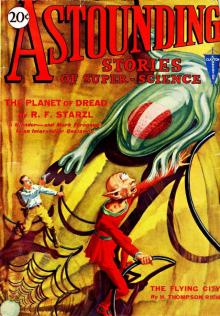 Astounding Stories of Super-Science, August 1930
Astounding Stories of Super-Science, August 1930 Astounding Stories, August, 1931
Astounding Stories, August, 1931 The Burden of Loyalty
The Burden of Loyalty Return to Wonderland
Return to Wonderland Anthology - A Thousand Doors
Anthology - A Thousand Doors The Fantasy Fan, October 1933
The Fantasy Fan, October 1933 Astounding Stories, June, 1931
Astounding Stories, June, 1931 Southern Stories
Southern Stories Astounding Stories of Super-Science, May, 1930
Astounding Stories of Super-Science, May, 1930 The Fantasy Fan December 1933
The Fantasy Fan December 1933 Adventures in Many Lands
Adventures in Many Lands The Fantasy Fan February 1934
The Fantasy Fan February 1934 The Fantasy Fan November 1933
The Fantasy Fan November 1933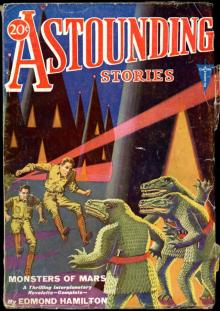 Astounding Stories, April, 1931
Astounding Stories, April, 1931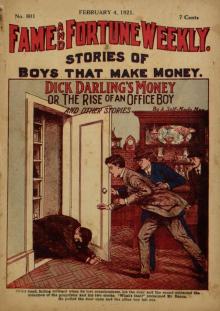 Fame and Fortune Weekly, No. 801, February 4, 1921
Fame and Fortune Weekly, No. 801, February 4, 1921 Astounding Stories of Super-Science, November, 1930
Astounding Stories of Super-Science, November, 1930 Astounding Stories of Super-Science January 1931
Astounding Stories of Super-Science January 1931 A Monk of Fife
A Monk of Fife Astounding Stories of Super-Science September 1930
Astounding Stories of Super-Science September 1930 Astounding Stories of Super-Science July 1930
Astounding Stories of Super-Science July 1930 Astounding Stories of Super-Science, June, 1930
Astounding Stories of Super-Science, June, 1930 Astounding Stories of Super-Science, October, 1930
Astounding Stories of Super-Science, October, 1930 Astounding Stories of Super-Science, March 1930
Astounding Stories of Super-Science, March 1930 The Fantasy Fan January 1934
The Fantasy Fan January 1934 The Fantasy Fan September 1933
The Fantasy Fan September 1933 Astounding Stories of Super-Science February 1930
Astounding Stories of Super-Science February 1930 Astounding Stories, May, 1931
Astounding Stories, May, 1931 Strange Stories of Colonial Days
Strange Stories of Colonial Days Golden Age of Science Fiction Vol IX
Golden Age of Science Fiction Vol IX Astounding Stories of Super-Science, December 1930
Astounding Stories of Super-Science, December 1930 Evolutions: Essential Tales of the Halo Universe
Evolutions: Essential Tales of the Halo Universe Good Stories Reprinted from the Ladies' Home Journal of Philadelphia
Good Stories Reprinted from the Ladies' Home Journal of Philadelphia Dragons!
Dragons!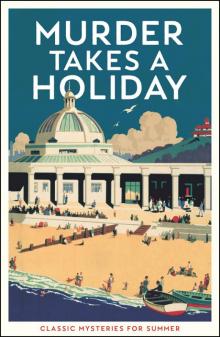 Murder Takes a Holiday
Murder Takes a Holiday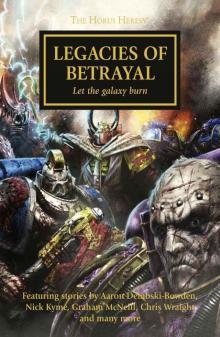 Legacies of Betrayal
Legacies of Betrayal STAR WARS: TALES FROM THE CLONE WARS
STAR WARS: TALES FROM THE CLONE WARS Strange New Worlds 2016
Strange New Worlds 2016 Lippincott's Magazine, August, 1885
Lippincott's Magazine, August, 1885 Golden Age of Science Fiction Vol X
Golden Age of Science Fiction Vol X Hot Stuff
Hot Stuff Santa Wore Spurs
Santa Wore Spurs Paranormal Erotica
Paranormal Erotica Tangled Hearts: A Menage Collection
Tangled Hearts: A Menage Collection Sweet Tea and Jesus Shoes
Sweet Tea and Jesus Shoes The Journey Prize Stories 25
The Journey Prize Stories 25 Wild Western Tales 2: 101 Classic Western Stories Vol. 2 (Civitas Library Classics)
Wild Western Tales 2: 101 Classic Western Stories Vol. 2 (Civitas Library Classics) (5/15) The Golden Age of Science Fiction Volume V: An Anthology of 50 Short Stories
(5/15) The Golden Age of Science Fiction Volume V: An Anthology of 50 Short Stories (4/15) The Golden Age of Science Fiction Volume IV: An Anthology of 50 Short Stories
(4/15) The Golden Age of Science Fiction Volume IV: An Anthology of 50 Short Stories Ten Journeys
Ten Journeys The Boss
The Boss The Penguin Book of French Poetry
The Penguin Book of French Poetry Golden Age of Science Fiction Vol VIII
Golden Age of Science Fiction Vol VIII His Cinderella Housekeeper 3-in-1
His Cinderella Housekeeper 3-in-1 The Magazine of Fantasy & Science Fiction - July/August 2016
The Magazine of Fantasy & Science Fiction - July/August 2016 PYRATE CTHULHU - Tales of the Cthulhu Mythos (vol.2)
PYRATE CTHULHU - Tales of the Cthulhu Mythos (vol.2) Tales from a Master's Notebook
Tales from a Master's Notebook April 1930
April 1930 New Erotica 6
New Erotica 6 Damocles
Damocles The Longest Night Vol. 1
The Longest Night Vol. 1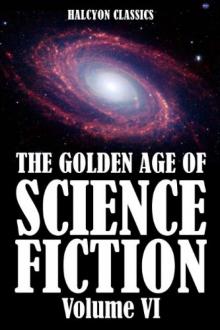 The Golden Age of Science Fiction Volume VI: An Anthology of 50 Short Stories
The Golden Age of Science Fiction Volume VI: An Anthology of 50 Short Stories (1/15) The Golden Age of Science Fiction: An Anthology of 50 Short Stories
(1/15) The Golden Age of Science Fiction: An Anthology of 50 Short Stories Eye of Terra
Eye of Terra ONCE UPON A REGENCY CHRISTMAS
ONCE UPON A REGENCY CHRISTMAS Nexus Confessions
Nexus Confessions Passionate Kisses
Passionate Kisses War Without End
War Without End Doctor Who: Time Lord Fairy Tales
Doctor Who: Time Lord Fairy Tales Gotrek and Felix: The Anthology
Gotrek and Felix: The Anthology WESTERN CHRISTMAS PROPOSALS
WESTERN CHRISTMAS PROPOSALS The Journey Prize Stories 27
The Journey Prize Stories 27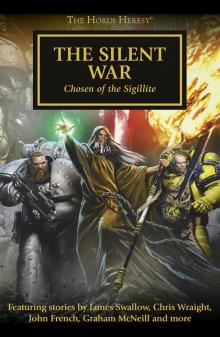 The Silent War
The Silent War Liaisons
Liaisons Ellora's Cavemen: Tales from the Temple IV
Ellora's Cavemen: Tales from the Temple IV Ellora's Cavemen: Tales from the Temple II
Ellora's Cavemen: Tales from the Temple II Some of the Best From Tor.com, 2013 Edition: A Tor.Com Original
Some of the Best From Tor.com, 2013 Edition: A Tor.Com Original Urban Occult
Urban Occult Fractures
Fractures The Stories: Five Years of Original Fiction on Tor.com
The Stories: Five Years of Original Fiction on Tor.com The Penguin Book of Modern British Short Stories
The Penguin Book of Modern British Short Stories Mortarch of Night
Mortarch of Night The Portable Nineteenth-Century African American Women Writers
The Portable Nineteenth-Century African American Women Writers The Golden Age of Science Fiction Volume VII: An Anthology of 50 Short Stories
The Golden Age of Science Fiction Volume VII: An Anthology of 50 Short Stories Holy Bible: King James Version, The
Holy Bible: King James Version, The Eight Rooms
Eight Rooms sanguineangels
sanguineangels DarkNightsWithaBillionaireBundle
DarkNightsWithaBillionaireBundle Casserole Diplomacy and Other Stories
Casserole Diplomacy and Other Stories How I Survived My Summer Vacation
How I Survived My Summer Vacation Alfred Hitchcock Presents: 16 Skeletons From My Closet
Alfred Hitchcock Presents: 16 Skeletons From My Closet Lords, Ladies, Butlers and Maids
Lords, Ladies, Butlers and Maids The B4 Leg
The B4 Leg Ellora's Cavemen: Tales from the Temple I
Ellora's Cavemen: Tales from the Temple I 2014 Campbellian Anthology
2014 Campbellian Anthology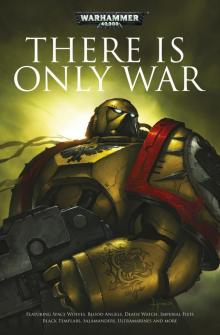 There Is Only War
There Is Only War Obsidian Alliances
Obsidian Alliances 12 Gifts for Christmas
12 Gifts for Christmas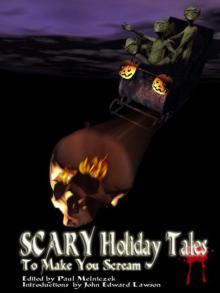 Scary Holiday Tales to Make You Scream
Scary Holiday Tales to Make You Scream 25 For 25
25 For 25 The Plagues of Orath
The Plagues of Orath And Then He Kissed Me
And Then He Kissed Me Star Trek - Gateways 7 - WHAT LAY BEYOND
Star Trek - Gateways 7 - WHAT LAY BEYOND Laugh Your Head Off Again and Again
Laugh Your Head Off Again and Again The Balfour Legacy
The Balfour Legacy Golden Age of Science Fiction Vol XI
Golden Age of Science Fiction Vol XI (3/15) The Golden Age of Science Fiction Volume III: An Anthology of 50 Short Stories
(3/15) The Golden Age of Science Fiction Volume III: An Anthology of 50 Short Stories Shas'o
Shas'o Astounding Science Fiction Stories: An Anthology of 350 Scifi Stories Volume 2 (Halcyon Classics)
Astounding Science Fiction Stories: An Anthology of 350 Scifi Stories Volume 2 (Halcyon Classics) Twists in Time
Twists in Time Meduson
Meduson The Magazine of Fantasy & Science Fiction - August 1980
The Magazine of Fantasy & Science Fiction - August 1980 The Journey Prize Stories 22
The Journey Prize Stories 22 The Book that Made Me
The Book that Made Me Angels of Death Anthology
Angels of Death Anthology Ask the Bones
Ask the Bones Emergence
Emergence Beware the Little White Rabbit
Beware the Little White Rabbit Xcite Delights Book 1
Xcite Delights Book 1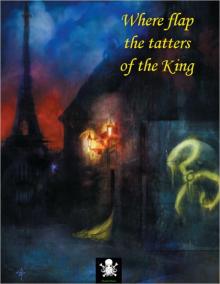 Where flap the tatters of the King
Where flap the tatters of the King The Journey Prize Stories 21
The Journey Prize Stories 21 Tales of the Slayer, Volume II
Tales of the Slayer, Volume II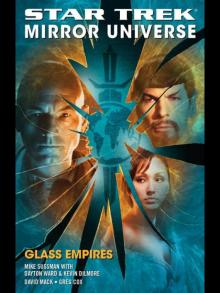 Glass Empires
Glass Empires Golden Age of Science Fiction Vol XII
Golden Age of Science Fiction Vol XII (2/15) The Golden Age of Science Fiction Volume II: An Anthology of 50 Short Stories
(2/15) The Golden Age of Science Fiction Volume II: An Anthology of 50 Short Stories Fairytale Collection
Fairytale Collection Angels!
Angels! Golden Age of Science Fiction Vol XIII
Golden Age of Science Fiction Vol XIII